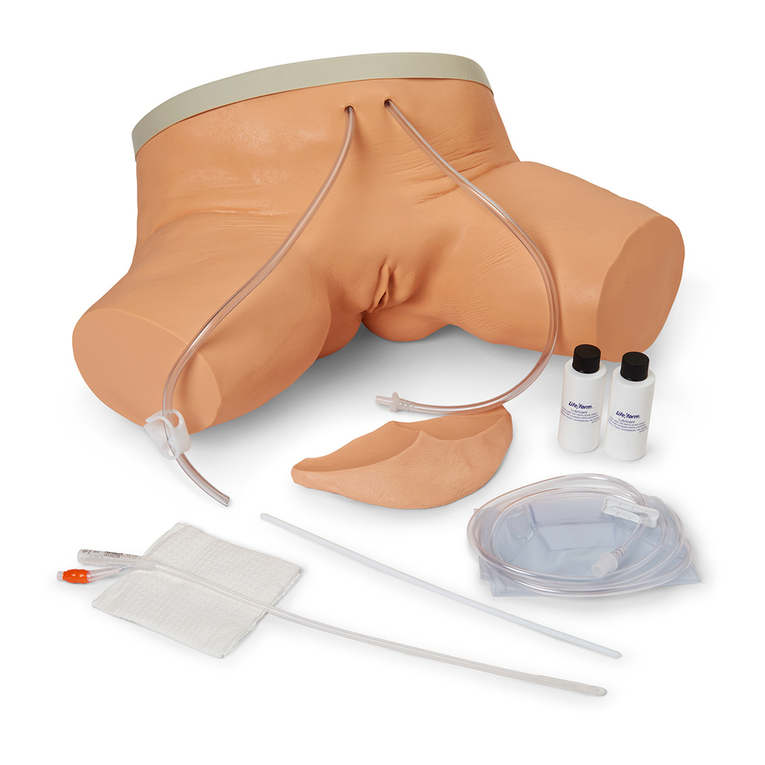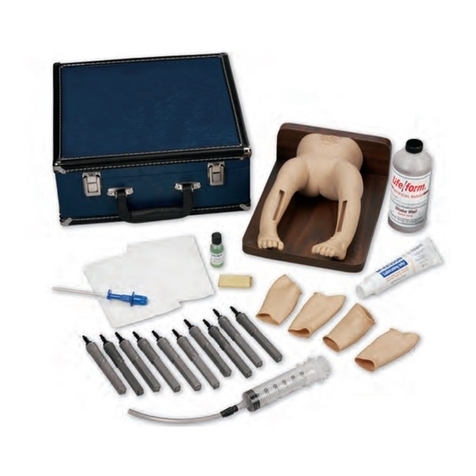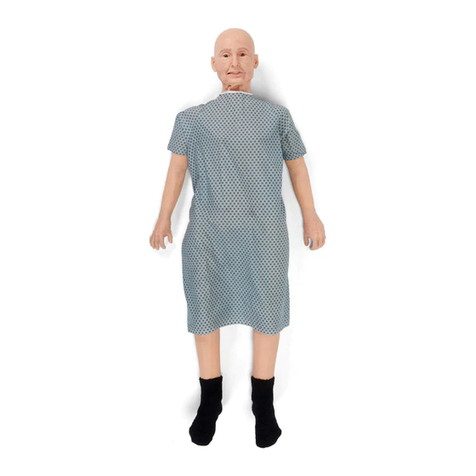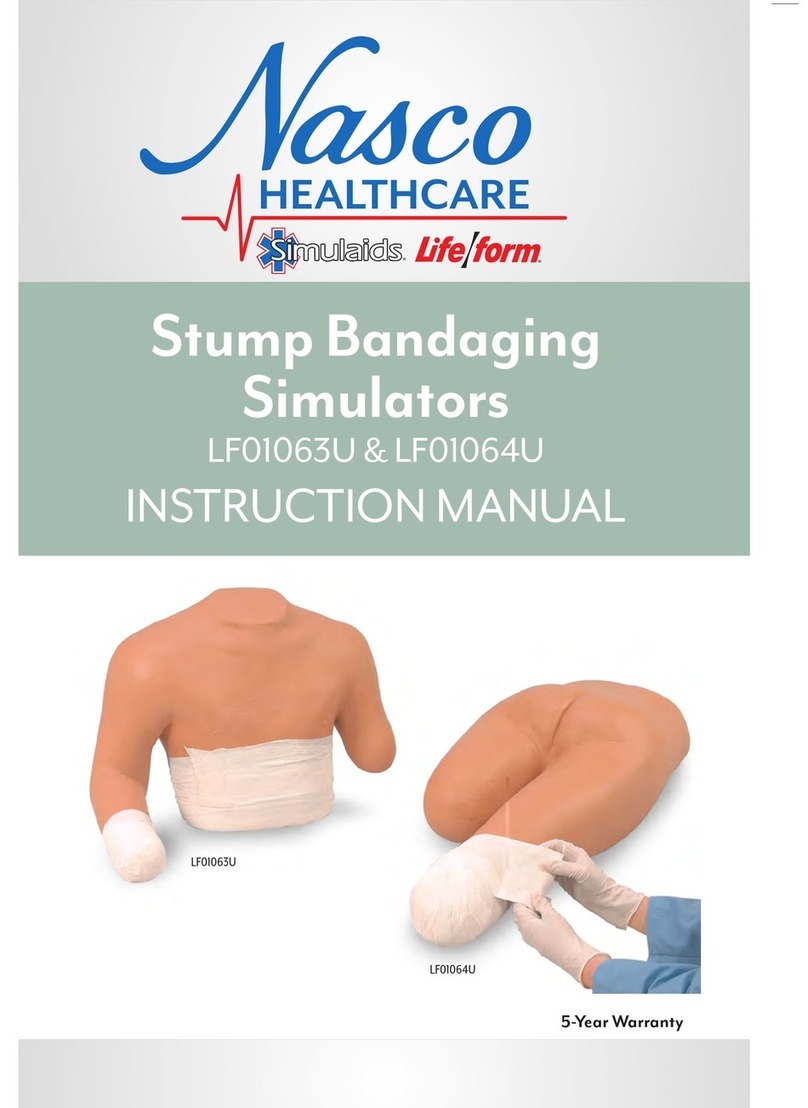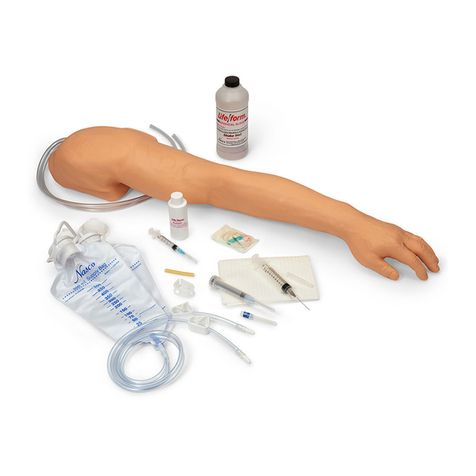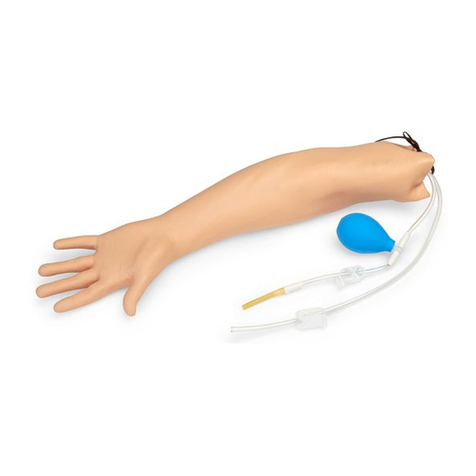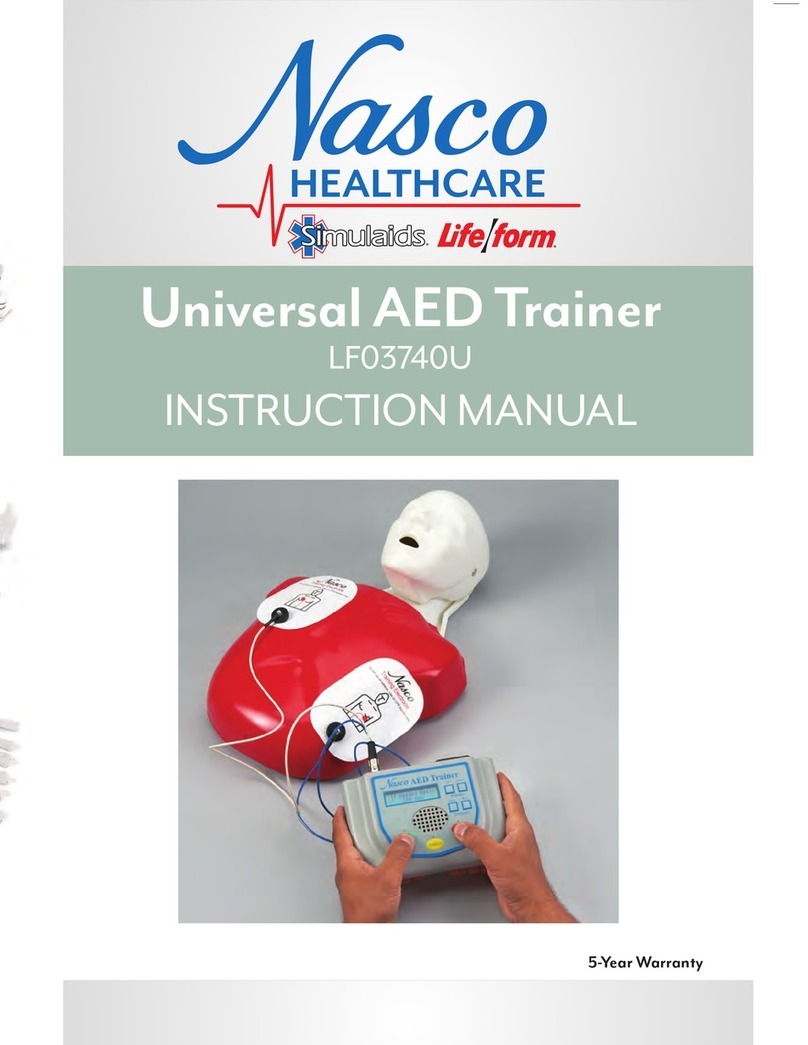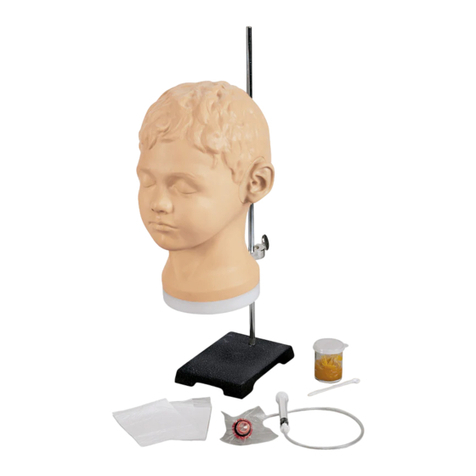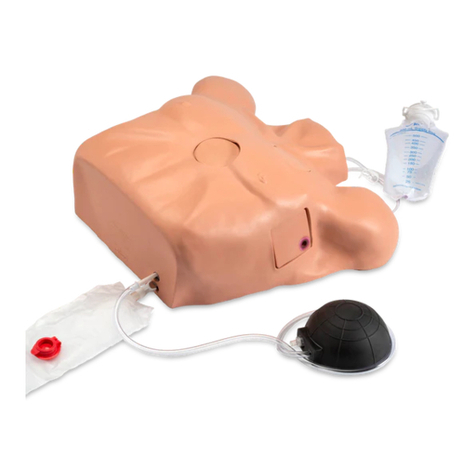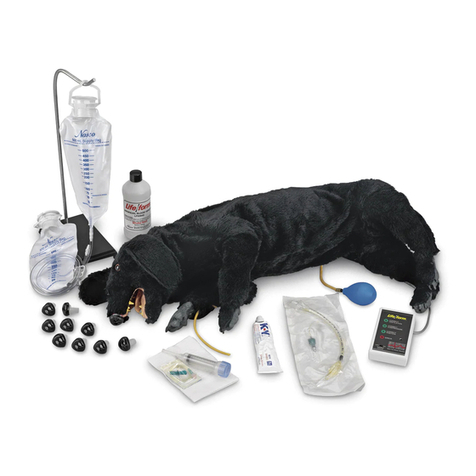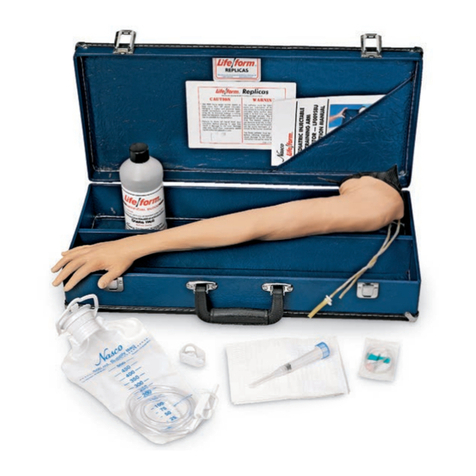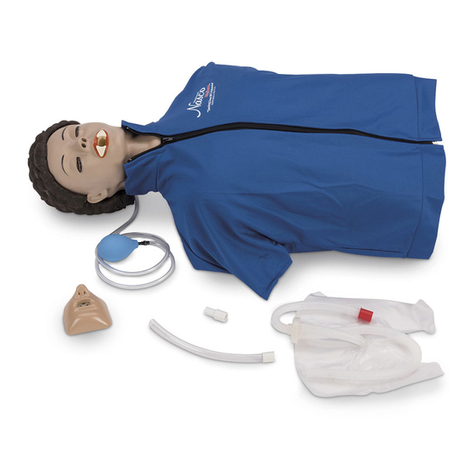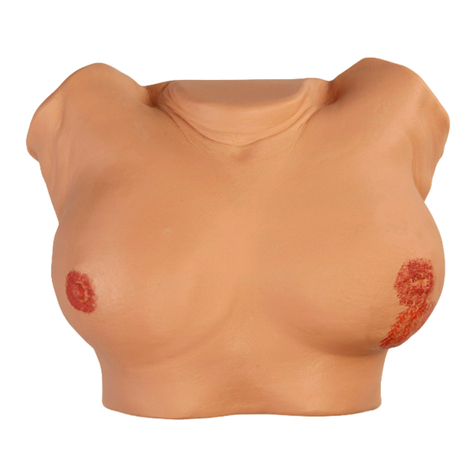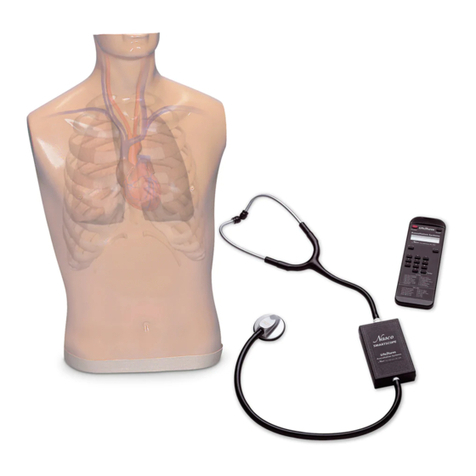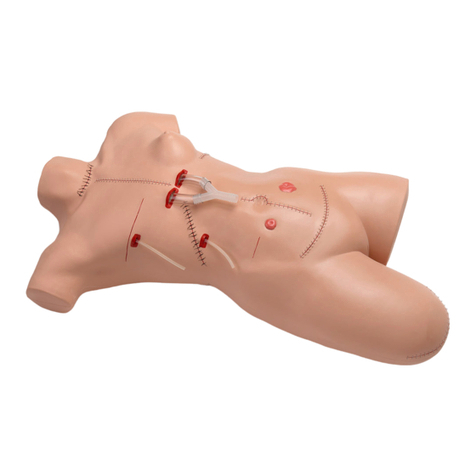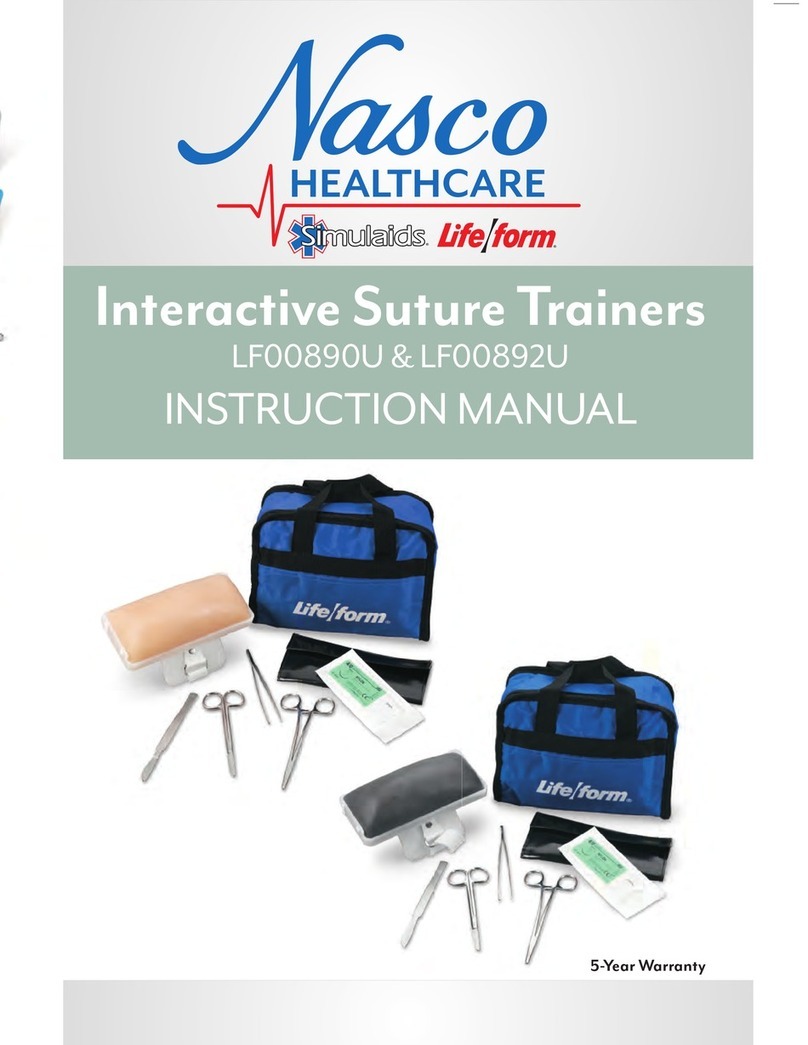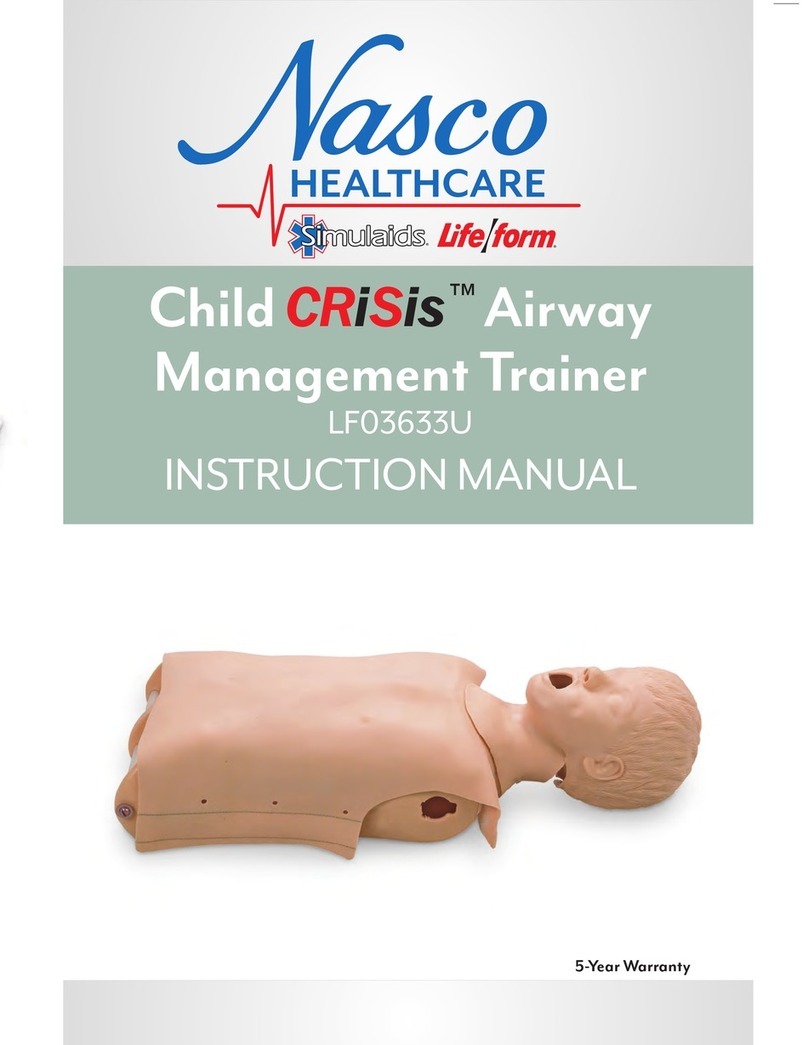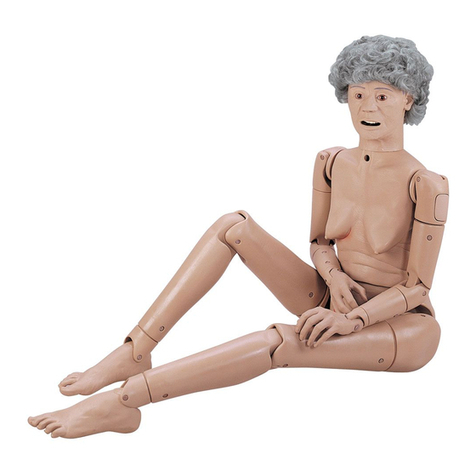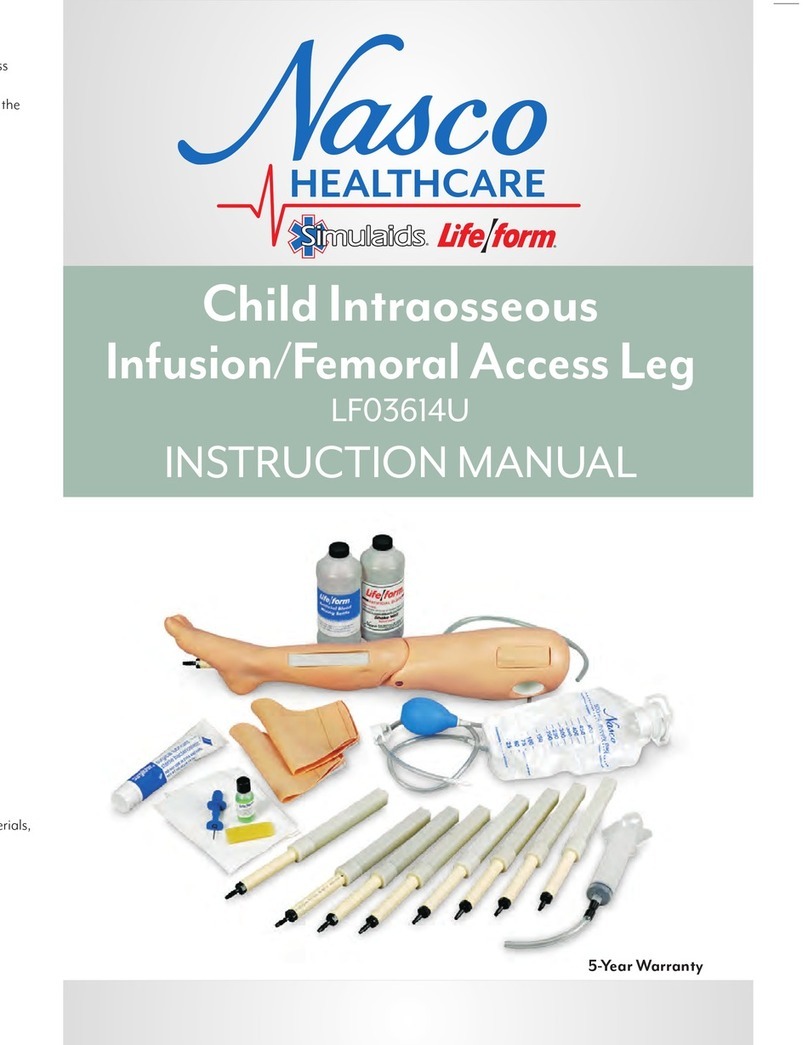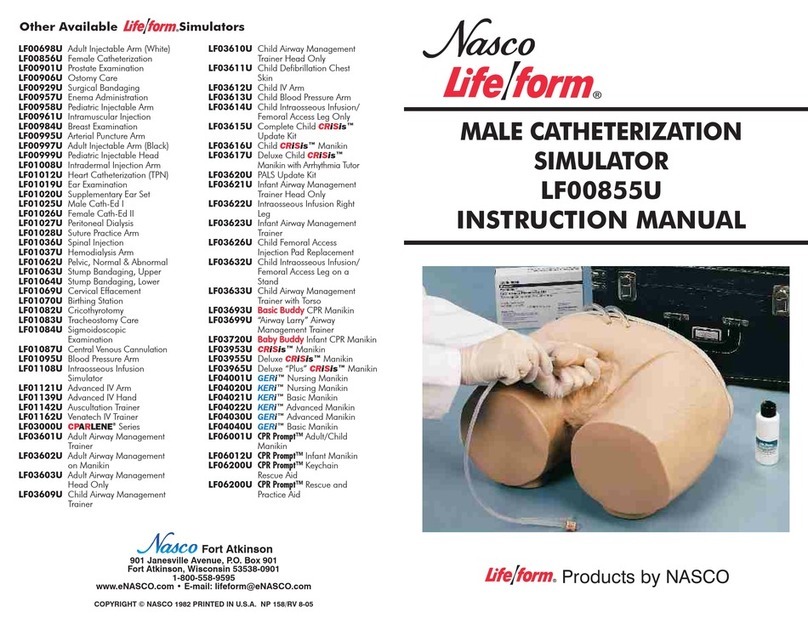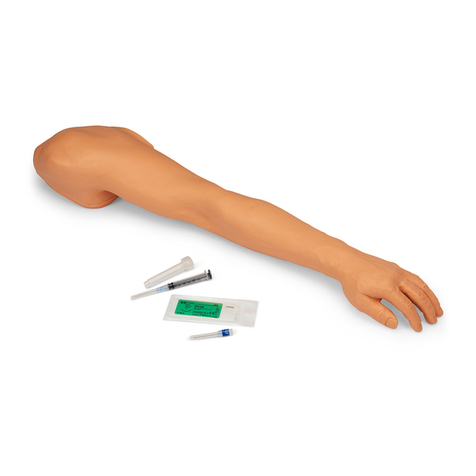ABOUT THE SIMULATOR
The
CRiSis
™System Defibrillation Chest Skin has been designed to be placed on the
CPARLENE
®
brand of CPR manikins (full body “Airway Larry” manikins as well as Adult Airway Management
Trainer Torso and both Advanced and “Airway Larry” Airway Management Torso Trainers) to
enable you, the customer, to safely defibrillate.
The
CRiSis
™System Defibrillation Chest Skin will enable you to practice defibrillation using man-
ual, semiautomatic, and automatic external defibrillators (AEDs). When using any one of the above
listed types of defibrillators in training, always follow the recommended operating procedures for
that particular defibrillator. The Defibrillation Chest Skin has been designed to absorb a maximum
of 360 joules of energy**. Although capable of absorbing 360 joules, we recommend that the
smallest energy level possible be used while training with the skin. In addition, the Defibrillation
Chest Skin also includes 4 ECG sites and the ability to connect to the Life/form®Interactive ECG
Simulator (LF03670U), sold separately. The Interactive ECG Simulator allows for pacing and wave
form practice. The Interactive ECG Simulator products 17 adult/pediatric rhythms.
Note: Prior to removing the upper compression plate, you may need to disconnect the lung airway/
stomach system, depending on which Life/form®manikin you are updating.
LIST OF COMPONENTS
• Defibrillation ECG Chest Skin with Load Box
• Four Lead Snap Cable Connected
• Set of Large Thread Screws
• Set of Bolts with Washers
• Self-adhesive foam pieces
**Note: 360 joules is the maximum energy level that Nasco recommends administering to the
defibrillation chest skin. Energy levels in excess of 360 joules may cause irreparable damage to the
chest skin, circuitry, and patient simulator being used — thus voiding Nasco’s warranty and endan-
gering your equipment. Nasco assumes no liability for damage or injury that may be caused by the
use and/or misuse of this equipment. All normal safety precautions for defibrillation training should
be followed and energy levels should be minimized. Nasco did not design nor intend this defibrilla-
tion chest skin to be used as anything other than a training apparatus for defibrillation.
2
SET UP
The
CRiSis
™System Defibrillation Chest Skin has been designed to replace the standard outer
chest skin on Life/form®brand Full Body and Torso CPR and Airway Training manikins, thus
enabling you to safely defibrillate.
Please follow the setup procedures for the type of manikin (torso with or without legs) on which you
wish to place the
CRiSis
™System Defibrillation Chest Skin.
7
To change the age group, select the age group key, then the rhythm you want.
Note: At Power On the adult age group is automatically selected.
ADULT DEFIBRILLATION TRAINING
• VF Ventricular Fibrillation
• VT fast Ventricular Tachycardia. Wide QRS. Rate: 185
• VT slow Ventricular Tachycardia. Wide QRS. Rate: 140
• VT poly Ventricular Tachycardia. Fluctuating QRS axis.
• AFIB Atrial Fibrillation. Ventricular rate: 120-160
• AFLTR Atrial Flutter (2:1). Ventricular rate: 150
• SVT SVT alternates with NSR, then remains in SVT. SVT rate: 216
• S TACH Sinus Tachycardia. Rate: 120
• NSR Normal Sinus Rhythm. Rate: 72
• ASYS Asystole
• SINUS PVC Sinus Rhythm with PVCs. Sinus rate: 72
•
ADULT EXTERNAL PACER TRAINING
• S BRDY Sinus Bradycardia. Rate: 40
• J BRDY Junctional Bradycardia. Rate: 42
• 2nd I2nd deg. type I AV Block (4:3). Atrial rate: 60
• 2nd II PVC 2nd deg. type II AV Block (4:3). PVCs. Wide QRS. Atrial rate: 60
• 2nd II 2nd deg. type II AV Block (4:3). Wide QRS. Atrial rate: 60
• 3rd 3rd deg. AV Block. Wide QRS. Ventricular rate: 37
•
PEDIATRIC DEFIBRILLATION TRAINING
• VF Ventricular Fibrillation
• VT fast Ventricular Tachycardia. Wide QRS. Visable P wave, Rate: 180
• VT slow Ventricular Tachycardia. Wide QRS. Rate: 148
• VT poly Ventricular Tachycardia. Fluctuating QRS axis. Short runs.
• AFIB Atrial Fibrillation. Small R waves. Ventricular rate: 135-160
• AFLTR Atrial Flutter (2:1). Ventricular rate: 150
• SVT Supraventricular Tachycardia. Inverted P follows QRS. rate: 216
• S TACH Sinus Tachycardia. Rate: 165
• NSR Normal Sinus Rhythm. Rate: 90
• ASYS Asystole
• SINUS PVC Sinus Rhythm with PVCs. Sinus rate: 90
•
PEDIATRIC EXTERNAL PACER TRAINING
• S BRDY Sinus Bradycardia. Rate: 50
• J BRDY Junctional Bradycardia. Rate: 60
• 2nd I2nd deg. type I AV Block (5:4). Atrial rate: 60
• 2nd II PVC 2nd deg. type II AV Block (5:4) with PVCs. Atrial rate: 60
• 2nd II 2nd deg. type II AV Block (5:4). Atrial rate: 60
• 3rd 3rd deg. AV Block. Ventricular rate: 60
HC18000028INM15.indd 3-4 10/10/18 9:29 AM
